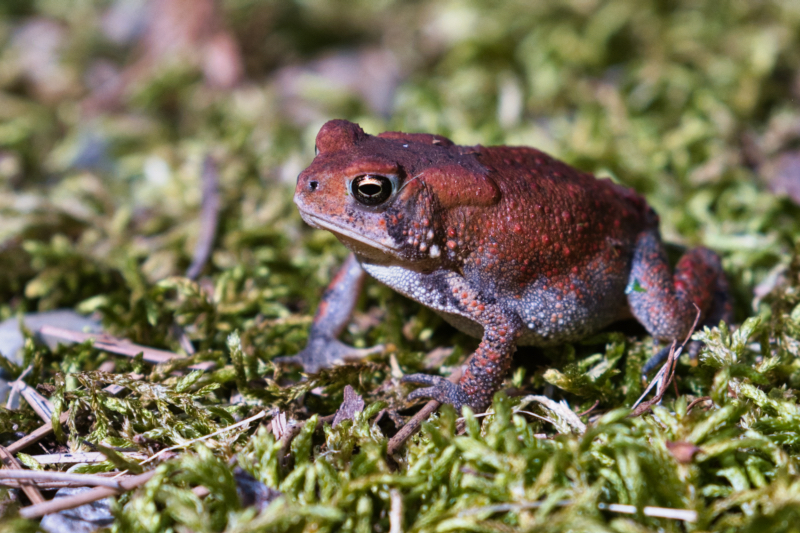While tending my yard in Arkansas, I came across a Dwarf American Toad. Earlier, I wrote about spotting a Fowler’s Toad while mowing. This time, I found this tiny amphibian near my cabin, close to the Ouachita National Forest.
The toad’s small size immediately caught my attention. Unlike other toads I’ve encountered, this one was easy to miss because of how well it blended with its surroundings. Its subtle coloring and warty texture make it almost invisible against the forest floor.

How the Dwarf American Toad Stands Out
The Dwarf American Toad is much smaller than the American Toad, averaging about 2 inches in length. For perspective, this makes it roughly a third smaller than its more common relative. Its high-pitched call is another distinguishing feature. While similar to the American Toad’s trill, it has a slightly sharper tone.
Capturing the Moment
I always keep my camera by the front door for unexpected photo opportunities. This habit paid off when I found the toad. To get a detailed shot, I crouched low to the ground and used my Fujifilm X-T3 camera. The setup included a Canon EF 100-400 mm f/4.5-5.6L IS II lens and a Fringer EF-FX Pro adapter.
Camera Settings
- Aperture: f/8
- ISO: 800
- Shutter speed: 1/1600
- Focal Length: 400 mm
About the Dwarf American Toad
The Dwarf American Toad (Bufo americanus charlesmithi) is a subspecies of the American Toad found in North America, including Arkansas. It prefers forested areas like the Ouachita National Forest, where I discovered this one.
Key Features
These toads grow to just 1.25–2 inches in length. Females are slightly larger than males. Their skin is warty and typically brown or gray, making them well-camouflaged. Their high-pitched trill sets them apart from other amphibians.
Behavior and Habitat
Dwarf American Toads are nocturnal and most active at night. They emerge from hiding to feed on insects and small invertebrates. During winter, they hibernate by burrowing into soil to escape freezing temperatures.
Challenges and Conservation
Though not endangered, Dwarf American Toads face serious threats like habitat loss, pollution, and disease. Amphibians are especially vulnerable to environmental changes, so protecting their habitats is essential. Avoiding habitat destruction and preventing the spread of disease are key steps in supporting their survival.
